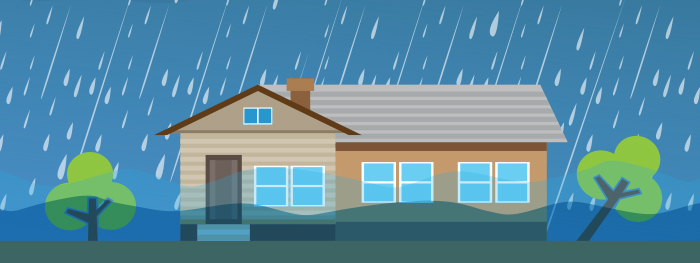New Flood Insurance Ratings Aim to Create Equity
Ninety percent of natural disasters in the United States involve flooding, causing billions of dollars in annual losses.1 Most flood coverage is provided under the federal National Flood Insurance Program (NFIP), which brought a new pricing methodology called Risk Rating 2.0 into full effect on April 1, 2022.

The NFIP is a program under the Federal Emergency Management Agency (FEMA). Whereas old premium pricing was based on FEMA flood-hazard maps that assigned the same risk to most properties in a general area, Risk Rating 2.0 provides a more individualized picture of a property’s risk, using a wider range of data, including the distance to the water threat and the cost to rebuild a home. This system is intended to make it easier for homeowners to understand the actual risk to their homes and set premiums more in line with that risk.
The new pricing applied to new policies effective on or after October 1, 2021, and to policies renewed on or after April 1, 2022. According to FEMA, 23% of properties will see premium decreases averaging $86 per month under the new program, while 66% will see monthly increases of less than $10, and 7% will see increases of $10 to $20 per month. Only 4% of properties will have premiums increase more than $20 per month.2
To ease the transition for owners of vulnerable, high-valued homes, annual increases for residential properties are capped at 18% until they reach the full rate. Certain non-residential and high-risk property premiums can be increased by 25% annually until they reach the full rate.3
Water from Below
Water damage to your home from a leaking pipe, a broken dishwasher, or a hole in your roof — water that comes from the top down — is typically covered by your homeowners insurance policy (up to your policy limits). However, damage from water that enters from the ground up is excluded from most homeowners policies and requires a separate flood insurance policy.
To be considered a flood for insurance purposes, water must cover at least two acres or affect two properties. Typically, there is a 30-day waiting period before flood coverage goes into effect, so property owners should not wait until there is an imminent threat to buy flood insurance.
Mortgage lenders require flood insurance for homes in designated high-risk zones. Even if you own your home outright or do not live in a flood-prone area, you may want to consider coverage. About 20% of flood insurance claims are in low- to moderate-risk areas.4
You can obtain NFIP insurance through the same professional who handles your other insurance needs. For more information about the risk of flooding and flood insurance, see floodsmart.gov.
